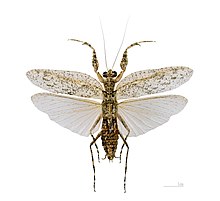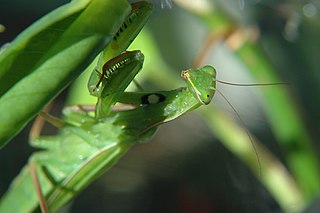
The genus Mantis is in the family Mantidae, of the mantis order Mantodea.

Amantis is a genus of praying mantids native to Asia and the islands of the Pacific Ocean and now belongs to the monotypic tribe Amantini of the subfamily Iridopteryginae.

Amantis reticulata is a species of praying mantis in the family Mantidae, found in Indomalaya.
Compsomantis crassiceps is a species of praying mantis found in Borneo and Java.
Parablepharis is a genus of praying mantises in the family Hymenopodidae. It is monotypic, being represented by the single species, Parablepharis kuhlii and is found in India, Myanmar, Vietnam, Borneo, Java and Yunnan, China.

Rhombodera is a genus of praying mantises native to Asia and possessing common names such as shield mantis, hood mantis, and leaf mantis because of their extended, leaf-like thoraxes.
Hierodula timorensis is a species of praying mantis from the family Mantidae.

Rhombodera basalis known as Malaysian shield mantis, is a species of praying mantis of the genus Rhombodera.
Rhombodera lingulata is a species of praying mantises in the family Mantidae, found in Asia.
Epsomantis is a monotypic genus of mantis in the new (2019) family Nanomantidae. It represented by the single species, Epsomantis tortricoides.
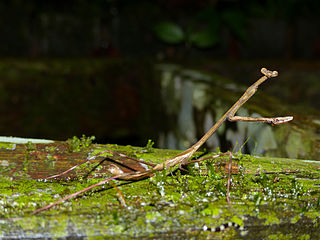
Euchomenella is a genus of mantids and typical of the tribe Euchomenellini. Current records are from Vietnam and Borneo.

Odontomantis is a genus of mantids in the family Hymenopodidae; species can be found in tropical Asia.
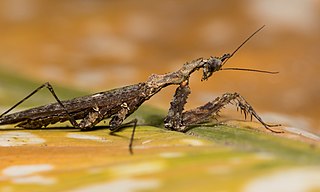
Haania is the type genus of Asian praying mantids in the new (2019) family Haaniidae. They are recorded from: southern China (Hainan), Indo-China and the Philippines.
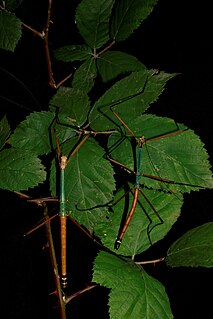
Lopaphus is an Asian genus of stick insects in the family Diapheromeridae and subfamily Necrosciinae. Species have been recorded from India, China and South-East Asia.

Tropidomantis is a genus of praying mantis in the family Nanomantidae, with species recorded from Asia and the Pacific islands.
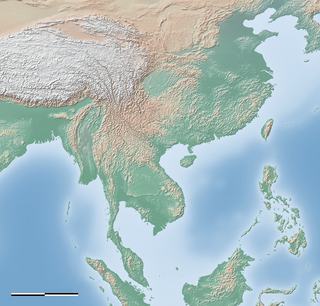
Gonypeta is an Asian genus of praying mantids: in the subfamily Gonypetinae.

Leptomantella is a genus of praying mantids and typical of the new (2019) family Leptomantellidae. Species have been recorded from Asia.
Oxyrrhepes is a genus of grasshoppers in the family Acrididae and subfamily Catantopinae; it is the only genus placed in tribe Oxyrrhepini Tinkham, 1940.
Arnobia is a genus of Asian bush crickets of the tribe Holochlorini within the subfamily Phaneropterinae.
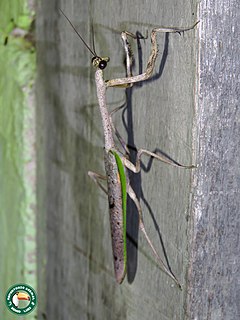
Pseudovates is a genus of praying mantis in the family Mantidae. There are more than 20 described species in the genus Pseudovates, and are found in North, Central, and South America.
